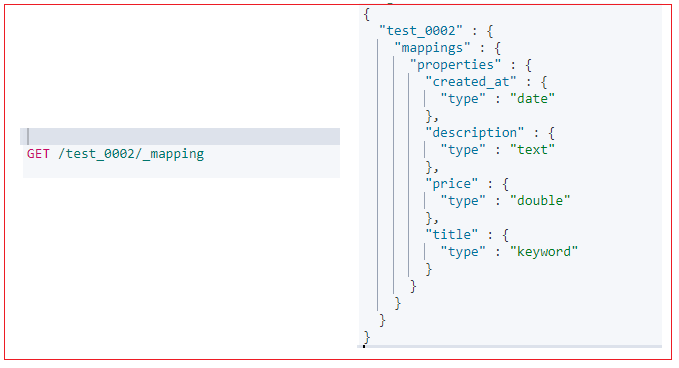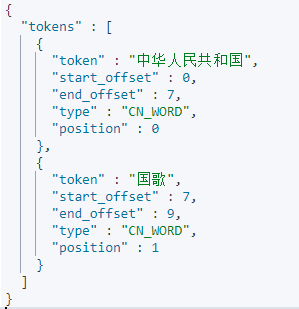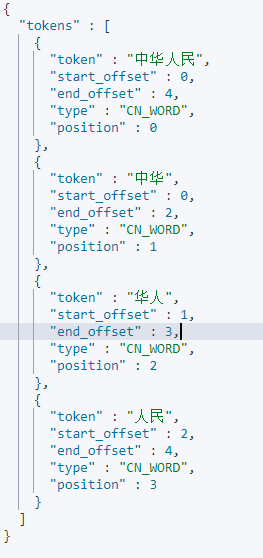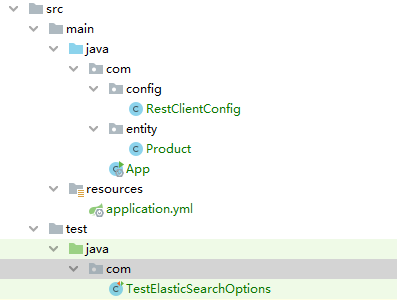
Elasticsearch 是一个分布式、高扩展、高实时的搜索与数据分析引擎。它能很方便的使大量数据具有搜索、分析和探索的能力。充分利用Elasticsearch的水平伸缩性,能使数据在生产环境变得更有价值。Elasticsearch 的实现原理主要分为以下几个步骤,首先用户将数据提交到Elasticsearch 数据库中,再通过分词控制器去将对应的语句分词,将其权重和分词结果一并存入数据,当用户搜索数据时候,再根据权重将结果排名,打分,再将返回结果呈现给用户。
Elasticsearch是一个全文检索服务器(全文检索是一种非结构化数据的搜索方式)
结构化数据:指具有固定格式固定长度的数据,如数据库中的字段。
非结构化数据:指格式和长度不固定的数据,如电商网站的商品详情
结构化数据一般存入数据库,使用sql语句即可快速查询。但由于非结构化数据的数据量大且格式不固定,我们需要采用全文检索的方式进行搜索。全文检索通过建立倒排索引加快搜索效率。
索引
索引:将数据中的一部分信息提取出来,重新组成一定的数据结构,然后根据该结构进行快速搜索。索引就是目录,列如字典会将字的拼音提取出来做成目录,通过目录可以快速找到字的位置。
正向索引(正排索引)
将文档ID建立为索引,通过ID可以快速查找到数据,如果数据库中的主键就会创建正排索引。
反向索引(倒排索引)
非结构化数据中往往会根据关键词查询数据,将数据中的关键词建立索引,指向文档数据,这样的索引称为反向索引。
Elasticsearch应用场景
- 2013年初,GitHub抛弃了Solr,采取Elasticsearch来做PB级的搜索。GitHub使用Elasticsearch搜索20TB 的数据,包括13亿文件和1300亿行代码。
- 维基百科:以Elasticsearch为基础的核心搜索架构。
- 百度:百度目前广泛使用Elasticsearch作为文本数据分析,采集百度所有服务器上的各类指标数据及用户自定义数据。目前覆盖百度内部20多个业务线(包括casio、云分析、网盟、预测、文库、
- 直达号、钱包、风控等),单集群最大100台机器,200个ES节点,每天导入30TB+数据 。
- 新浪使用ES分析处理32亿条实时日志。
- 阿里使用ES构建自己的日志采集和分析体系。
- 可以使用Elasticsearch实现全站搜索,线上商城系统的搜索,分析日志等功能。
Elasticsearch和Solr比较
目前Elasticsearch的市场占有率越来越高,Spring从2020年起也已经停止Spring Data Solr的维护,更多的公司使用Elasticsearch作为搜索引擎。
Solr是Apache下的顶级开源项目,采用java开发,它也是基于Lucene的全文检索服务器。solr提供优化比Lucene跟为丰富的查询语言,同时实现了可配置、可拓展,并对索引、搜索性能进行了优化 solr可以独立运行,运行在jetty、tomcat等这些servlet容器中,Sole索引的实现方法很简单,用post方法向solr服务器发送一条可描述Filed及其内容的XML文档,Solr根据xml文档的添加、删除、更新索引、Solr搜索只需要发送HTTP GET请求,然后对solr返回xml、json等格式的查询结果进行解析,组织页面布局、solr不提供构建UI的功能,solr提供了一个管理界面,通过管理界面可以对查询的solr的配置和运行情况 Solr是一个开源搜索平台,用于构建搜索应用程序。 是一个独立的企业级搜索应用服务器,它对外提供类似于Web-service的API接口 它建立在Lucene(全文搜索引擎)之上Solr是企业级的,快速的和高度可扩展的。
- Solr利用Zookeeper进行分布式管理,而Elasticsearch自身带有分布式协调管理功能;
- Solr支持更多格式的数据,而Elasticsearch仅支持json文件格式;
- Solr官方提供的功能更多,而Elasticsearch本身更注重于核心功能,高级功能多由第三方插件提供;
- Solr在传统的搜索应用中表现好于Elasticsearch,但在处理实时搜索应用时效率明显低于Elasticsearch。
Elasticsearch数据结构
文档(Document)
文档是可被查询的最小数据单元,一个文档(Document)就是一条数据。类似关系型数据库的记录的概念。
类型(Type)
具有一组共同字段的文档定义成一个类型,类似关系型数据库中的表的概念
索引(Index)
索引是多种类型文档的集合,类似于关系型数据库中的库的概念
域(Fied)
文档由多个域组成,类型关系型数据中字段的概念
ES7.x之后删除了type的概念,一个索引不会代表一个库,而是一张张表
映射(Mapping)
映射是定义一个文档和它所包含的字段如何被存储和索引的过程,在默认配置下ES,可以根据插入的数据自动的创建mapping,也可以手动创建mapping。mapping中主要包括字段名,字段类型等等。
Elasticsearch索引操作
Elasticsearch使用Restful风格请求访问操作的,请求参数和返回值都是json格式.
索引操作
索引是多种类型文档的集合,类似于关系型数据库中的库的概念
创建索引
# 1.创建索引
# PUT /索引名
PUT /products
# 更改副本数量:
PUT /products/_settings
{
"number_of_replicas": 0
}
# 2.创建索引进行索引分片设置
PUT /test_0001
{
"settings":{
"number_of_shards": 1, #指定主分片的数量
"number_of_replicas": 0 #指定副本分片的数量
}
}

查询索引
# 查询索引
GET /_cat/indices?v

green状态:每个索引的primary shard和replica shard都是active状态
yellow : 每个索引的primary shard都是active状态,但是部分replica shard不是active状态,处于不可用状态
red: 不是所有的索引的primary shard都是active状态,部分索引有数据丢失了
删除索引
#3.删除索引
DELETE /索引名
DELETE /* # 删除所有索引
映射操作
映射是定义一个文档和它所包含的字段如何被存储和索引的过程,在默认配置下ES,可以根据插入的数据自动的创建mapping,也可以手动创建mapping。mapping中主要包括字段名,字段类型等等。
创建映射
PUT /test_0002
{
"settings": {
"number_of_shards": 1,
"number_of_replicas": 0
},
"mappings": {
"properties": {
"title":{
"type": "keyword"
},
"price":{
"type": "double"
},
"created_at":{
"type": "date"
},
"description":{
"type": "text"
}
}
}
}
查询映射
# 1.查看某个索引的映射
GET /索引名/_mapping

文档操作
文档是可被查询的最小数据单元,一个文档(Document)就是一条数据。类似关系型数据库的记录的概念。
添加文档
# 指定文档id
POST /test_0002/_doc/1
{
"title": "iphone13",
"price": 8999.99,
"created_at": "2022-02-15",
"description": "iPhone 13屏幕采用6.1英寸OLED屏幕。"
}
# 结果返回
{
"_index" : "test_0002",
"_type" : "_doc",
"_id" : "1",
"_version" : 1,
"result" : "created",
"_shards" : {
"total" : 1,
"successful" : 1,
"failed" : 0
},
"_seq_no" : 0,
"_primary_term" : 1
}
查询文档
GET /test_0002/_doc/1
#结果返回
{
"_index" : "test_0002",
"_type" : "_doc",
"_id" : "1",
"_version" : 1,
"_seq_no" : 0,
"_primary_term" : 1,
"found" : true,
"_source" : {
"title" : "iphone13",
"price" : 8999.99,
"created_at" : "2022-02-15",
"description" : "iPhone 13屏幕采用6.1英寸OLED屏幕。"
}
}
删除文档
DELETE /test_0002/_doc/1
更新文档
#这种更新方式是先删除原始文档,在将更新文档以新的内容插入
PUT /products/_doc/2
{
"title":"iphon14"
}
#这种方式可以将数据原始内容保存,并在此基础上更新。
POST /test_0002/_doc/2/_update
{
"doc" : {
"title" : "iphon13"
}
}
批量操作
#批量索引两条文档
POST /test_0002/_doc/_bulk
{
"index":{
"_id":"3"}}
{
"title":"iphone14","price":8999.99,"created_at":"2021-09-15","description":"iPhone 13屏幕采用6.8英寸OLED屏幕"}
{
"index":{
"_id":"4"}}
{
"title":"iphone14","price":8999.99,"created_at":"2021-09-15","description":"iPhone 15屏幕采用10.8英寸OLED屏幕"}
#批量时不会因为一个失败而全部失败,而是继续执行后续操作,在返回时按照执行的状态返回!
高级查询
语法:GET /索引名/_doc/_search {json格式请求体数据}
# 1.创建索引 映射
PUT /products/
{
"mappings": {
"properties": {
"title":{
"type": "keyword"
},
"price":{
"type": "double"
},
"created_at":{
"type":"date"
},
"description":{
"type":"text"
}
}
}
}
# 2.测试数据
PUT /products/_doc/_bulk
{
"index":{
}}
{
"title":"iphone12 pro","price":8999,"created_at":"2020-10-23","description":"iPhone 12 Pro采用超瓷晶面板和亚光质感玻璃背板,搭配不锈钢边框,有银色、石墨色、金色、海蓝色四种颜色。宽度:71.5毫米,高度:146.7毫米,厚度:7.4毫米,重量:187克"}
{
"index":{
}}
{
"title":"iphone12","price":4999,"created_at":"2020-10-23","description":"iPhone 12 高度:146.7毫米;宽度:71.5毫米;厚度:7.4毫米;重量:162克(5.73盎司) [5] 。iPhone 12设计采用了离子玻璃,以及7000系列铝金属外壳。"}
{
"index":{
}}
{
"title":"iphone13","price":6000,"created_at":"2021-09-15","description":"iPhone 13屏幕采用6.1英寸OLED屏幕;高度约146.7毫米,宽度约71.5毫米,厚度约7.65毫米,重量约173克。"}
{
"index":{
}}
{
"title":"iphone13 pro","price":8999,"created_at":"2021-09-15","description":"iPhone 13Pro搭载A15 Bionic芯片,拥有四种配色,支持5G。有128G、256G、512G、1T可选,售价为999美元起。"}
查询所有
GET /products/_search
{
"query": {
"match_all": {
}
}
}
关键字查询
GET /products/_search
{
"query": {
"term": {
"price": {
"value": 4999
}
}
}
}
NOTE1: 通过使用term查询得知ES中默认使用分词器为标准分词器(StandardAnalyzer),标准分词器对于英文单词分词,对于中文单字分词。
NOTE2: 通过使用term查询得知,在ES的Mapping Type 中 keyword , date ,integer, long , double , boolean or ip 这些类型不分词,只有text类型分词。
查询范围(range)
GET /products/_search
{
"query": {
"range": {
"price": {
"gte": 1400,
"lte": 9999
}
}
}
}
前缀查询(prefix)
GET /products/_search
{
"query": {
"prefix": {
"title": {
"value": "ipho"
}
}
}
}
通配符查询(wildcard)
GET /products/_search
{
"query": {
"wildcard": {
"description": {
"value": "iphon*"
}
}
}
}
多id查询(ids)
GET /products/_search
{
"query": {
"ids": {
"values": ["1","2"]
}
}
}
模糊查询(fuzzy)
GET /products/_search
{
"query": {
"fuzzy": {
"description": "iphooone"
}
}
}
注意: fuzzy 模糊查询 最大模糊错误 必须在0-2之间
- 搜索关键词长度为 2 不允许存在模糊
- 搜索关键词长度为3-5 允许一次模糊
- 搜索关键词长度大于5 允许最大2模糊
布尔查询(bool)
GET /products/_search
{
"query": {
"bool": {
"must": [
{
"term": {
"price": {
"value": 4999
}
}}
]
}
}
}
bool 关键字: 用来组合多个条件实现复杂查询
must: 相当于&& 同时成立
should: 相当于|| 成立一个就行
must_not: 相当于! 不能满足任何一个
多字段查询(multi_match)
GET /products/_search
{
"query": {
"multi_match": {
"query": "iphone13 毫",
"fields": ["title","description"]
}
}
}
字段类型分词,将查询条件分词之后进行查询改字段 如果该字段不分词就会将查询条件作为整体进行查询
默认字段分词查询(query_string)
GET /products/_search
{
"query": {
"query_string": {
"default_field": "description",
"query": "屏幕真的非常不错"
}
}
}
查询字段分词就将查询条件分词查询 查询字段不分词将查询条件不分词查询
高亮查询(highlight)
highlight 关键字
#可以让符合条件的文档中的关键词高亮
GET /products/_search
{
"query": {
"term": {
"description": {
"value": "iphone"
}
}
},
"highlight": {
"fields": {
"*":{
}
}
}
}
自定义高亮html标签
#可以在highlight中使用`pre_tags`和`post_tags`
GET /products/_search
{
"query": {
"term": {
"description": {
"value": "iphone"
}
}
},
"highlight": {
"post_tags": ["</span>"],
"pre_tags": ["<span style='color:red'>"],
"fields": {
"*":{
}
}
}
}
多字段高亮
#使用`require_field_match`开启多个字段高亮
GET /products/_search
{
"query": {
"term": {
"description": {
"value": "iphone"
}
}
},
"highlight": {
"require_field_match": "false",
"post_tags": ["</span>"],
"pre_tags": ["<span style='color:red'>"],
"fields": {
"*":{
}
}
}
}
返回指定条数(size)
#from 关键字: 用来指定起始返回位置,和size关键字连用可实现分页效果
GET /products/_search
{
"query": {
"match_all": {
}
},
"size": 5,
"from": 0
}
指定字段排序(sort)
GET /products/_search
{
"query": {
"match_all": {
}
},
"sort": [
{
"price": {
"order": "desc"
}
}
]
}
返回指定字段([_source])
GET /products/_search
{
"query": {
"match_all": {
}
},
"_source": ["title","description"]
}
聚合查询
根据某个字段分组
#根据某个字段进行分组统计数量
GET /products/_search
{
"query": {
"term": {
"description": {
"value": "iphone"
}
}
},
"aggs": {
"price_group": {
"teproductsrms": {
"field": "price"
}
}
}
}
求最大值
# 求最大值
GET /products/_search
{
"aggs": {
"price_max": {
"max": {
"field": "price"
}
}
}
}
求最小值
# 求最小值
GET /products/_search
{
"aggs": {
"price_min": {
"min": {
"field": "price"
}
}
}
}
求平均值
# 求平均值
GET /products/_search
{
"aggs": {
"price_agv": {
"avg": {
"field": "price"
}
}
}
}
求和
# 求和
GET /products/_search
{
"aggs": {
"price_sum": {
"sum": {
"field": "price"
}
}
}
}
分词器
Analysis和Analyzer
分词就是将文档通过Analyzer分成一个个的Term,每一个Term都指向这个Term的文档。
Analysis:文本分析是把全文转换成一系列单词(term/token)的过程
Analyzer:是通过Analyzer来实现的。
Analyzer组成
在ES中默认使用标准分词器: StandardAnalyzer 特点: 中文单字分词 单词分词。如:“我是中国人 this is good man----> 我 是 中 国 人 this is good man”
分析器(Analyzer)
组成部分(character filters、tokenizers、token filters)
character filter(字符过滤器)
在一段文本进行分词之前,先进行预处理,比如说最常见的就是,过滤html标签(hello --> hello),& --> and(I&you --> I and you)
tokenizers(分词器)
英文分词可以根据空格将单词分开,中文分词比较复杂,可以采用机器学习算法来分词。
Token filters (Token过滤器)
将切分的单词进行加工。大小写转换(例将“Quick”转为小写),去掉停用词(例如停用词像“a”、“and”、“the”等等),加入同义词(例如同义词像“jump”和“leap”)。
三者顺序:Character Filters—>Tokenizer—>Token Filter
三者个数:Character Filters(0个或多个) + Tokenizer + Token Filters(0个或多个)
内置分词器
- Standard Analyzer - 默认分词器,英文按单词词切分,并小写处理
- Simple Analyzer - 按照单词切分(符号被过滤), 小写处理
- Stop Analyzer - 小写处理,停用词过滤(the,a,is)
- Whitespace Analyzer - 按照空格切分,不转小写
- Keyword Analyzer - 不分词,直接将输入当作输出
标准分词器
#按照单词分词 英文统一转为小写 过滤标点符号 中文单字分词
POST /_analyze
{
"analyzer": "standard",
"text": "this is a , good Man 中华人民共和国"
}
Simple(分词器)
#按照单词分词 英文统一转为小写 去掉符号 中文不分词
POST /_analyze
{
"analyzer": "simple",
"text": "this is a , good Man 中华人民共和国"
}
Whitespace(分词器)
#中文 英文 按照空格分词 英文不会转为小写 不去掉标点符
POST /_analyze
{
"analyzer": "whitespace",
"text": "this is a , good Man"
}
创建索引设置分词
PUT /索引名
{
"settings": {
},
"mappings": {
"properties": {
"title":{
"type": "text",
"analyzer": "standard" //显示指定分词器
}
}
}
}
中文分词器
IKAnalyzer是一个开源的,基于java语言开发的轻量级的中文分词工具包。提供了两种分词算法:
- ik_smart:最少切分
- ik_max_word:最细粒度划分
ik分词器的版本要和es版本保持一致。
POST /_analyze
{
"analyzer": "ik_smart",
"text": "中华人民共和国国歌"
}

POST /_analyze
{
"analyzer": "ik_max_word",
"text": "中华人民"
}

扩展词、停用词配置
IK支持自定义扩展词典和停用词典
- 扩展词典就是有些词并不是关键词,但是也希望被ES用来作为检索的关键词,可以将这些词加入扩展词典。
- 停用词典就是有些词是关键词,但是出于业务场景不想使用这些关键词被检索到,可以将这些词放入停用词典。
定义扩展词典和停用词典可以修改IK分词器中config目录中IKAnalyzer.cfg.xml这个文件。
过滤查询
Filter Query
过滤查询,其实准确来说,ES中的查询操作分为2种: 查询(query)和过滤(filter)。查询即是之前提到的query查询,它 (查询)默认会计算每个返回文档的得分,然后根据得分排序。而过滤(filter)只会筛选出符合的文档,并不计算 得分,而且它可以缓存文档 。所以,单从性能考虑,过滤比查询更快。 换句话说过滤适合在大范围筛选数据,而查询则适合精确匹配数据。一般应用时, 应先使用过滤操作过滤数据, 然后使用查询匹配数据。
GET /ems/emp/_search
{
"query": {
"bool": {
"must": [
{
"match_all": {
}} //查询条件
],
"filter": {
....} //过滤条件
}
}
注意:
- 在执行 filter 和 query 时,先执行 filter 在执行 query
- Elasticsearch会自动缓存经常使用的过滤器,以加快性能。
常见过滤类型有: term 、 terms 、ranage、exists、ids等filter。
term 、 terms Filter
GET /ems/emp/_search # 使用term过滤
{
"query": {
"bool": {
"must": [
{
"term": {
"name": {
"value": "小黑"
}
}}
],
"filter": {
"term": {
"content":"框架"
}
}
}
}
}
GET /dangdang/book/_search #使用terms过滤
{
"query": {
"bool": {
"must": [
{
"term": {
"name": {
"value": "中国"
}
}}
],
"filter": {
"terms": {
"content":[
"科技",
"声音"
]
}
}
}
}
}
ranage filter
GET /ems/emp/_search
{
"query": {
"bool": {
"must": [
{
"term": {
"name": {
"value": "中国"
}
}}
],
"filter": {
"range": {
"age": {
"gte": 7,
"lte": 20
}
}
}
}
}
}
exists filter
#过滤存在指定字段,获取字段不为空的索引记录使用
GET /ems/emp/_search
{
"query": {
"bool": {
"must": [
{
"term": {
"name": {
"value": "中国"
}
}}
],
"filter": {
"exists": {
"field":"aaa"
}
}
}
}
}
ids filter
#过滤含有指定字段的索引记录
GET /ems/emp/_search
{
"query": {
"bool": {
"must": [
{
"term": {
"name": {
"value": "中国"
}
}}
],
"filter": {
"ids": {
"values": ["1","2","3"]
}
}
}
}
}
ElasticSearchOptions

引入依赖
<parent>
<groupId>org.springframework.boot</groupId>
<artifactId>spring-boot-starter-parent</artifactId>
<version>2.5.5</version>
</parent>
<dependencies>
<dependency>
<groupId>org.springframework</groupId>
<artifactId>spring-web</artifactId>
</dependency>
<dependency>
<groupId>org.springframework.boot</groupId>
<artifactId>spring-boot-starter-data-elasticsearch</artifactId>
</dependency>
<dependency>
<groupId>junit</groupId>
<artifactId>junit</artifactId>
<version>4.12</version>
</dependency>
<dependency>
<groupId>org.projectlombok</groupId>
<artifactId>lombok</artifactId>
</dependency>
<dependency>
<groupId>org.springframework.boot</groupId>
<artifactId>spring-boot-starter-test</artifactId>
<scope>test</scope>
</dependency>
</dependencies>
配置客户端
import org.elasticsearch.client.RestHighLevelClient;
import org.springframework.beans.factory.annotation.Value;
import org.springframework.context.annotation.Bean;
import org.springframework.context.annotation.Configuration;
import org.springframework.data.elasticsearch.client.ClientConfiguration;
import org.springframework.data.elasticsearch.client.RestClients;
import org.springframework.data.elasticsearch.config.AbstractElasticsearchConfiguration;
@Configuration
public class RestClientConfig extends AbstractElasticsearchConfiguration {
@Value("${elasticsearch.host}")
private String host;
@Override
@Bean
public RestHighLevelClient elasticsearchClient() {
final ClientConfiguration clientConfiguration = ClientConfiguration.builder()
.connectedTo(host)
.build();
return RestClients.create(clientConfiguration).rest();
}
}
客户端对象
import lombok.Data;
import org.springframework.data.annotation.Id;
import org.springframework.data.elasticsearch.annotations.Document;
import org.springframework.data.elasticsearch.annotations.Field;
import org.springframework.data.elasticsearch.annotations.FieldType;
@Document(indexName = "products", createIndex = true)
@Data
public class Product {
@Id
private String id;
@Field(type = FieldType.Keyword)
private String title;
@Field(type = FieldType.Float)
private Double price;
@Field(type = FieldType.Text)
private String description;
/**
*
* 1. @Document(indexName = "products", createIndex = true) 用在类上 作用:代表一个对象为一个文档
* indexName属性: 创建索引的名称
* createIndex属性: 是否创建索引
* 2. @Id 用在属性上 作用:将对象id字段与ES中文档的_id对应
* 3. @Field(type = FieldType.Keyword) 用在属性上 作用:用来描述属性在ES中存储类型以及分词情况
* type: 用来指定字段类型
*/
}
测试类
import com.entity.Product;
import org.junit.jupiter.api.Test;
import org.springframework.beans.factory.annotation.Autowired;
import org.springframework.boot.test.context.SpringBootTest;
import org.springframework.data.elasticsearch.core.ElasticsearchOperations;
import org.springframework.data.elasticsearch.core.SearchHits;
import org.springframework.data.elasticsearch.core.query.Query;
@SpringBootTest
public class TestElasticSearchOptions{
private final ElasticsearchOperations elasticsearchOperations;
@Autowired
public TestElasticSearchOptions(ElasticsearchOperations elasticsearchOperations) {
this.elasticsearchOperations = elasticsearchOperations;
}
//创建索引index&创建映射mapping 并索引一条文件
//保存 & 更新 id 存在更新 id 不存在保存
@Test
public void testIndex(){
Product product = new Product();
product.setId("1");
product.setTitle("iphone14");
product.setPrice(6799.89);
product.setDescription("iPhone 14屏幕采用6.1英寸OLED屏幕");
elasticsearchOperations.save(product);
}
//删除文档
@Test
public void testDelete(){
Product product = new Product();
product.setId("1");
elasticsearchOperations.delete(product);
}
//查询文档
@Test
public void testGet(){
Product product = elasticsearchOperations.get("1", Product.class);
System.out.println(product.getId());
System.out.println(product.getPrice());
System.out.println(product.getTitle());
System.out.println(product.getDescription());
}
//更新文档
@Test
public void testUpdate() {
Product product = new Product();
product.setId("1");
product.setTitle("iphone14");
product.setPrice(6799.89);
product.setDescription("iPhone 14屏幕采用6.1英寸OLED屏幕 更新啦");
elasticsearchOperations.save(product);//不存在添加,存在更新
}
//删除所有
@Test
public void testDeleteAll() {
elasticsearchOperations.delete(Query.findAll(), Product.class);
}
//查询所有
@Test
public void testFindAll() {
SearchHits<Product> productSearchHits = elasticsearchOperations.search(Query.findAll(), Product.class);
productSearchHits.forEach(productSearchHit -> {
System.out.println("id: " + productSearchHit.getId());
System.out.println("score: " + productSearchHit.getScore());
Product product = productSearchHit.getContent();
System.out.println("product: " + product);
});
}
}
RestHighLevelClient
RestHighLevelClient的API作为ElasticSearch备受推荐的客户端组件,其封装系统操作ES的方法,包括索引结构管理,数据增删改查管理,常用查询方法,并且可以结合原生ES查询原生语法,功能十分强大。
import org.elasticsearch.action.admin.indices.delete.DeleteIndexRequest;
import org.elasticsearch.action.get.GetRequest;
import org.elasticsearch.action.get.GetResponse;
import org.elasticsearch.action.index.IndexRequest;
import org.elasticsearch.action.index.IndexResponse;
import org.elasticsearch.action.search.SearchResponse;
import org.elasticsearch.action.support.master.AcknowledgedResponse;
import org.elasticsearch.client.RequestOptions;
import org.elasticsearch.client.RestHighLevelClient;
import org.elasticsearch.client.indices.CreateIndexRequest;
import org.elasticsearch.client.indices.CreateIndexResponse;
import org.elasticsearch.common.xcontent.XContentType;
import org.elasticsearch.search.SearchHit;
import org.elasticsearch.search.SearchHits;
import org.elasticsearch.search.builder.SearchSourceBuilder;
import org.junit.jupiter.api.Test;
import org.springframework.beans.factory.annotation.Autowired;
import org.springframework.boot.test.context.SpringBootTest;
import javax.naming.directory.SearchResult;
import java.io.IOException;
/**
* 索引和映射的操作
*/
@SpringBootTest
public class TestRestHighLevClient{
private final RestHighLevelClient restHighLevelClient;
@Autowired
public TestRestHighLevClient(RestHighLevelClient restHighLevelClient) {
this.restHighLevelClient = restHighLevelClient;
}
//创建索引并创建映射
@Test
public void testCreateIndexAndMapping() throws IOException {
//参数 1: 创建索引名称
CreateIndexRequest indexRequest = new CreateIndexRequest("goods");
//创建映射
//参数 1: source 代表映射 json 格式 参数 2: 代表数据格式类型 JSON
indexRequest.mapping("{\n" +
" \"properties\": {\n" +
" \"id\":{\n" +
" \"type\": \"integer\"\n" +
" },\n" +
" \"title\":{\n" +
" \"type\": \"keyword\" \n" +
" },\n" +
" \"price\":{\n" +
" \"type\": \"double\"\n" +
" },\n" +
" \"description\":{\n" +
" \"type\": \"text\",\n" +
" \"analyzer\": \"ik_max_word\"\n" +
" }\n" +
" }\n" +
" }", XContentType.JSON);
//参数 1: 创建索引请求对象 参数 2: 请求默认配置对象
CreateIndexResponse createIndexResponse = restHighLevelClient.indices().create(indexRequest, RequestOptions.DEFAULT);
System.out.println("是否创建成功: "+createIndexResponse.isAcknowledged());
}
//索引文档
@Test
public void testIndex() throws IOException {
IndexRequest indexRequest = new IndexRequest("goods");
indexRequest.source("{\n" +
" \"id\" : 1,\n" +
" \"title\" : \"保温杯\",\n" +
" \"price\" : 123.23,\n" +
" \"description\" : \"nice!\"\n" +
" }",XContentType.JSON);
IndexResponse index = restHighLevelClient.index(indexRequest, RequestOptions.DEFAULT);
System.out.println(index.status());
}
//基于 id 查询文档
@Test
public void testGet() throws IOException {
GetRequest getRequest = new GetRequest("goods","1");
GetResponse getResponse = restHighLevelClient.get(getRequest, RequestOptions.DEFAULT);
System.out.println(getResponse.getSourceAsString());
}
//删除索引
@Test
public void deleteIndex() throws IOException {
AcknowledgedResponse acknowledgedResponse = restHighLevelClient.indices().delete(new DeleteIndexRequest("products"), RequestOptions.DEFAULT);
System.out.println("是否删除成功: " + acknowledgedResponse.isAcknowledged());
}
//查询所有
@Test
public void testSearch() throws IOException {
SearchResult searchRequest = new SearchRequest("goods");
SearchSourceBuilder sourceBuilder = new SearchSourceBuilder();
sourceBuilder.query(QueryBuilders.matchAllQuery());
searchRequest.source(sourceBuilder);
SearchResponse searchResponse = restHighLevelClient.search(searchRequest, RequestOptions.DEFAULT);
//System.out.println(searchResponse.getHits().getTotalHits().value);
SearchHit[] hits = searchResponse.getHits().getHits();
for (SearchHit hit : hits) {
System.out.println(hit.getSourceAsString());
}
}
//综合查询
@Test
public void testSearch() throws IOException {
SearchRequest searchRequest = new SearchRequest("goods");
SearchSourceBuilder sourceBuilder = new SearchSourceBuilder();
sourceBuilder
.from(0)
.size(2)
.sort("price", SortOrder.DESC)
.fetchSource(new String[]{
"title"},new String[]{
})
.highlighter(new HighlightBuilder().field("description").requireFieldMatch(false).preTags("<span style='color:red;'>").postTags("</span>"))
.query(QueryBuilders.termQuery("description","111"));
searchRequest.source(sourceBuilder);
SearchResponse searchResponse = restHighLevelClient.search(searchRequest, RequestOptions.DEFAULT);
System.out.println("总条数: "+searchResponse.getHits().getTotalHits().value);
SearchHit[] hits = searchResponse.getHits().getHits();
for (SearchHit hit : hits) {
System.out.println(hit.getSourceAsString());
Map<String, HighlightField> highlightFields = hit.getHighlightFields();
highlightFields.forEach((k,v)-> System.out.println("key: "+k + " value: "+v.fragments()[0]));
}
}
}
SpringDataES
Spring Data ES是Spring对原生JAVA操作ES封装之后的产物,通过对原生API的封装,简化对ES的操作。
实体类创建
import lombok.Data;
import org.springframework.data.annotation.Id;
import org.springframework.data.elasticsearch.annotations.Document;
import org.springframework.data.elasticsearch.annotations.Field;
import org.springframework.data.elasticsearch.annotations.FieldType;
@Document(indexName = "product",createIndex = true)
@Data
public class Products {
@Id
@Field(type = FieldType.Integer,store = true,index = true)
private Integer id;
@Field(type = FieldType.Integer,store = true,index = true,analyzer = "ik_max_word",searchAnalyzer = "ik_max_word")
private String productName;
@Field(type = FieldType.Integer,store = true,index = true,analyzer = "ik_max_word",searchAnalyzer = "ik_max_word")
private String productDesc;
/**
@Document:标记在类上,标记实体类文档对象,一般有如下属性
indexName:对应索引名称
createIndex:是否自动创建索引
@Id:标记在成员变量上,标记一个字段为主键,该字段会同步到ES该文档ID的值
@Field:标记在成员变量上,标记为文档中的域,一般有如下属性:
type:域的类型
index:是否创建索引,默认是 true
store:是否单独存储,默认是 false
analyzer:分词器
searchAnalyzer:搜索时的分词器
*/
}
Repository接口
import com.entity.Products;
import org.springframework.data.elasticsearch.repository.ElasticsearchRepository;
public interface ProductRepository extends ElasticsearchRepository<Products,Integer> {
}
测试
import com.entity.Product;
import com.entity.Products;
import com.repository.ProductRepository;
import org.junit.jupiter.api.Test;
import org.springframework.beans.factory.annotation.Autowired;
import org.springframework.boot.test.context.SpringBootTest;
import org.springframework.data.domain.Page;
import org.springframework.data.domain.PageRequest;
import org.springframework.data.domain.Sort;
import java.util.List;
import java.util.Optional;
@SpringBootTest
public class ProductRepositoryTest {
@Autowired
private ProductRepository productRepository;
@Test
public void addDocument(){
Products products = new Products();
products.setId(1);
products.setProductName("iphone14");
products.setProductDesc("iPhone 14屏幕采用6.1英寸OLED屏幕 更新啦");
productRepository.save(products);
}
@Test
public void updateDocument(){
Products products = new Products(1, "iphone15", "iPhone 14屏幕采用6.1英寸OLED屏幕 更新啦");
productRepository.save(products);
}
@Test
public void findAllDocument(){
Iterable<Products> all = productRepository.findAll();
for (Products product : all) {
System.out.println(product);
}
}
@Test
public void findDocumentById(){
Optional<Products> product = productRepository.findById(1);
System.out.println(product.get());
}
@Test
public void deleteDocument(){
productRepository.deleteById(1);
}
@Test
public void testFindByProductDescMatch(){
List<Product> list = productRepository.findByProductDescMatch("iphone");
list.forEach(System.out::println);
}
@Test
public void testFindByProductDescFuzzy(){
List<Product> list = productRepository.findByProductDescFuzzy("elasticsearcha");
list.forEach(System.out::println);
}
@Test
public void testFindByProductName(){
List<Product> list = productRepository.findByProductName("elasticsearch");
list.forEach(System.out::println);
}
@Test
public void testFindByProductNameOrProductDesc(){
List<Product> list = productRepository.findByProductNameOrProductDesc("elasticsearch","手机");
list.forEach(System.out::println);
}
@Test
public void testFindByIdBetween(){
List<Product> list = productRepository.findByIdBetween(1,3);
list.forEach(System.out::println);
}
@Test
public void testFindPage(){
// 参数1:页数,参数2:每页条数
PageRequest pageable = PageRequest.of(1, 3);
Page<Products> page = productRepository.findAll(pageable);
System.out.println("总条数"+page.getTotalElements());
System.out.println("总页数"+page.getTotalPages());
System.out.println("数据"+page.getContent());
}
@Test
public void testFindPage2(){
Sort sort = Sort.by(Sort.Direction.DESC,"id");
PageRequest pageable = PageRequest.of(0, 2,sort);
Page<Product> page = productRepository.findByProductDescMatch("iphone", pageable);
System.out.println("总条数"+page.getTotalElements());
System.out.println("总页数"+page.getTotalPages());
System.out.println("数据"+page.getContent());
}
@Test
public void testFindSort(){
Sort sort = Sort.by(Sort.Direction.DESC, "id");
Iterable<Products> all = productRepository.findAll(sort);
for (Products product : all) {
System.out.println(product);
}
}
}
Elasticsearch集群
一个集群就是由一个或多个节点组织在一起,它们共同持有你整个的数据,并一起提供索引和搜索功能。一个集群由一个唯一的名字标识,这个名字默认就是elasticsearch。这个名字是重要的,因为一个节点只能通过指定某个集群的名字,来加入这个集群。
集群名字概念
节点
一个节点是你集群中的一个服务器,作为集群的一部分,它存储你的数据,参与集群的索引和搜索功能。和集群类似,一个节点也是由一个名字来标识的,默认情况下,这个名字是一个随机的漫威漫画角色的名字,这个名字会在启动的时候赋予节点。
索引
一组相似文档的集合
映射
用来定义索引存储文档的结构如:字段、类型等。
文档
索引中一条记录,可以被索引的最小单元
分片
Elasticsearch提供了将索引划分成多份的能力,这些份就叫做分片。当你创建一个索引的时候,你可以指定你想要的分片的数量。每个分片本身也是一个功能完善并且独立的“索引”,这个“索引”可以被放置 到集群中的任何节点上。
复制
Index的分片中一份或多份副本。
注:
- 分片的数量只能在索引创建时指定,索引创建后不能再更改分片数量,但可以改变副本的数量。
- 为保证节点发生故障后集群的正常运行,ES不会将某个分片和它的副本存在同一台节点上。
集群优化
水平扩容
- 关闭一个节点,可以发现ES集群可以自动进行故障应对。
- 重新打开该节点,可以发现ES集群可以自动进行水平扩容。
- 分片数不能改变,但是可以改变每个分片的副本数:
磁盘选择
ES的优化即通过调整参数使得读写性能更快磁盘通常是服务器的瓶颈。Elasticsearch重度使用磁盘,磁盘的效率越高,Elasticsearch的执行效率就越高。这里有一些优化磁盘的技巧:
- 使用SSD(固态硬盘),它比机械磁盘优秀多了。
- 使用RAID0模式(将连续的数据分散到多个硬盘存储,这样可以并行进行IO操作),代价是一块硬盘发生故障就会引发系统故障。
- 不要使用远程挂载的存储。
分片策略
分片和副本数并不是越多越好。每个分片的底层都是一个Lucene索引,会消耗一定的系统资源。且搜索请求需要命中索引中的所有分片,分片数过多会降低搜索性能。索引的分片数需要架构师和技术人员对业务的增长有预先的判断,一般来说我们遵循以下原则:
- 每个分片占用的硬盘容量不超过ES的最大JVM的堆空间设置(一般设置不超过32G)。比如:如果索引的总容量在500G左右, 那分片数量在16个左右即可。
- 分片数一般不超过节点数的3倍。比如:如果集群内有10个节点,则分片数不超过30个。
- 推迟分片分配:节点中断后集群会重新分配分片。但默认集群会等待一分钟来查看节点是否重新加入。我们可以设置等待的时长,减少重新分配的次数:
- 减少副本数量:进行写入操作时,需要把写入的数据都同步到副本,副本越多写入的效率就越慢。我们进行大批量进行写入操作 时可以先设置副本数为0,写入完成后再修改回正常的状态。
内存设置
ES默认占用内存是4GB,我们可以修改config/jvm.option设置ES的堆内存大小,Xms表示堆内存的初始大小,Xmx表示可分配的最大内存。
- Xmx和Xms的大小设置为相同的,可以减轻伸缩堆大小带来的压力。
- Xmx和Xms不要超过物理内存的50%,因为ES内部的Lucene也要占据一部分物理内存。
- Xmx和Xms不要超过32GB,由于Java语言的特性,堆内存超过32G会浪费大量系统资源,所以在内存足够的情况下,最终我们都会采用设置为31G:
例如:在一台128GB内存的机器中,我们可以创建两个节点,每个节点分配31GB内存